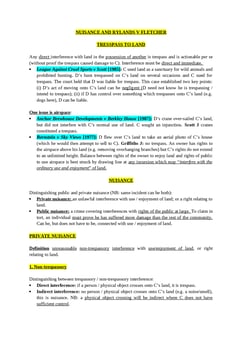Tremain v Pike [1969] 1 WLR 1556
Judgement for the case Tremain v Pike
Table Of Contents
Defendant was employed by Plaintiff on Plaintiff’s farm and contracted Weil’s disease.
CA held that it was so rare for Weil’s disease to be caught by humans and knowledge of the disease was so low, that it was not reasonably foreseeable that disease could occur.
-
The minimal foreseeable possibility of Defendant contracting the disease meant:
That Plaintiff was not in breach of his duty of care to take reasonable steps to prevent Defendant contracting the disease, and
-
Even if he was in breach, it was not reasonably foreseeable that Defendant would be harmed
(i.e. even if Defendant did nothing to protect Plaintiff from harm, he would still not be liable because it was not reasonably foreseeable that, even in breach, Defendant would catch the disease).
For Further Study on Tremain v Pike
Need instant answers? Our AI exam tutor is here to help.
Ask questions 🙋 Get answers 📔 It's simple 👁️👄👁️
Our AI is educated by the highest scoring students across all subjects and schools. Join hundreds of your peers today.
Get StartedSimilar Cases
Related Product Samples
These product samples contain the same concepts we cover in this case.

 Since 2010, Oxbridge Notes has been a trusted education marketplace, supplying high-quality materials from top achievers at universities like Oxford, Cambridge, LSE, Harvard, and Yale.
Since 2010, Oxbridge Notes has been a trusted education marketplace, supplying high-quality materials from top achievers at universities like Oxford, Cambridge, LSE, Harvard, and Yale.